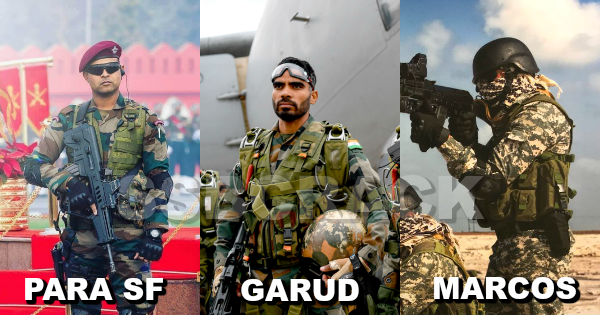What is the need for armed forces special forces division?

Awadhesh Kumar, Special Forces
A small group of highly motivated well trained men, carrying out a well planned operation at the right place and the right time can achieve strategic level results which even a Division size or bigger force may fail to achieve.
Earlier such Forces were raised as adhoc measures and disbanded after their mission. Since WW2, Britain decided to formalize such things and this finally resulted in the SAS and SBS etc. ending with a Brigadier as Commander SF and advisor SF to both CDS and the British Govt.
Things happened on a much bigger scale in USA. Over a period a number of Special Forces and Special Operations came up in all the three services and even their size kept expanding.
After several operational fiascos, USA created by an act of Congress, a full fledged joint tri service Special Operations Command under a 4 star General, to oversee the entire spectrum of SOF activities. In the Soviet Union things happened on a still bigger scale, though it has been trimmed down a bit in the present Russian Armed Forces.
On the Indian Sub Continent, Pakistan started its SF in late 1950s which ironically was raised by an Officer who had served in the Indian Parachute Regiment. Over the period it expanded from a unit into a Force under a Brigadier and now the Force has been upgraded to Major General level. He has direct access to the Chiefs in operational matters.
In India our SF started on adhoc basis in 1965 as Meghdoot Force. By 1969 we had two parachute commando battalions, who proved their worth in gold during 1971 war. With expanding requirements we added the third battalion. Need for a centralized Command Control began to be felt for this kind of force, to look after all the aspects. In 1987 during OP PAWAN in Sri Lanka came up the HQ PARA COMMANDO TASK FORCE under the legendary General (then Colonel) R K Nanavatty. The name evolved into AdHoc HQ SF.
It was realized that SF also needs to be treated akin to a separate specialized Arms / Service. Its training also has to be highly specialized and similarly its tasking. Certain tasks will be in direct support to the Operational Commands upto Corps level tasks.
Here tactical advice and certain logistic support may have to be provided by a centralized set up. Some tasks of strategic nature may be at GHQ level for which there has to be a fully functional and capable higher set up. Thus rose the need of an independent controlling HQ for SF.
In 1993, the actual HQ SF was raised under a Brigadier and it started functioning to first consolidate and then expand to provide both operational and advisory SF support to all the existing Army Commands including Chief and finally the CCS itself.
The commander of the expanded Force with out of area capabilities would be first a Major General and then a Lt General. For reasons best known to the Powers that be, this HQ SF was disbanded after 6or 7 years and merged with Military Operations Directorate / Infantry Directorate.
Meanwhile to meet other requirements, both the Navy and later the IAF also began their SF. Internal requirements also necessitated raising of SOF for anti terrorist operations like the Special Group and NSG.
Nowadays war per force is a tri service matter and against a asymmetrical type of Warfare the country may have to orchestrate its entire resources as one. So just like the need of a Chief of Defence Staff, we also need a tri service Special Operations Command at par with other single service/ tri services Commands.
However, CDS is still pending, though HQ Integrated Defence Staff is in place. In a similar manner it seems the Government has approved a truncated structure with name of Armed Forces Special Operations Division under a two star Officer. Once the Command, Control, training, administrative and logistics structure comes then it may first be upgraded to three star and finally to a full tri service Command under a C-In -C.
Now after nearly 20 years gap, we are once again raising this HQ. Luckily, Major General Ashok Dhingra has served as the General Staff Officer, head of Operations and Training in the rank of a Major, of the erstwhile HQSF.
This AFSOPD should have all the 9xSF Units, Naval Marcos Units, IAF Garud Units and training establishments under its Command &Control but providing direct SF support to their respective geographical Service commands on the line of Artillery Fire Support.
Apart from these, AFSOPD will have a few units for centralized operations in/ out of India. These may be manned by more specialised and more highly trained manpower selected from within the SF fraternity on lines of tier 1 SF of USA/ Russians.




